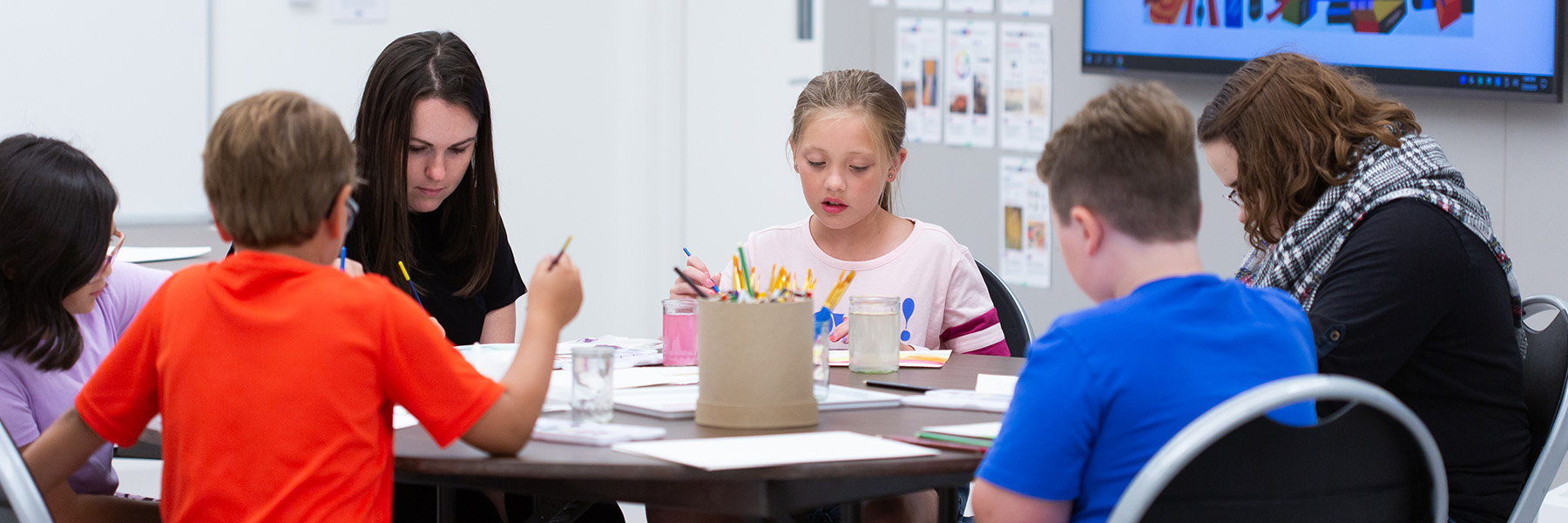We have something for everyone
Our art therapy programs aren't just for IU students, faculty, and staff. The museum is a community resource, including our art therapy program. Whether you're just beginning to use art as a way to express yourself or are ready to engage in more challenging conversations about art and what it means to you, we have an art therapy or wellness experience for you. Check our calendar for upcoming wellness and art therapy events.
Open Studio
During First Thursdays, the art-making studio is open from 4:00–7:00 p.m. for anyone who wants to make some art! You are welcome to use the art supplies provided in the studio or bring your own. All ages and abilities are welcome. No previous art-making experience is necessary.
Team-building Workshops
If you or your team are looking for a fun way to build connection and enhance collaboration, while also experiencing the museum in a new way, reach out to our Arts-based Wellness Experiences Manager to schedule a retreat that will involve gallery games and art-making!
Team-building Workshops are approximately 2 hours, capped at 15 participants. Workshop attendees meet in the atrium of the museum. Comfortable clothing is suggested, as art supplies will be used. Participants are welcome to incorporate lunch plans into their retreat; coordinate with the Arts-based Wellness Experiences Manager for more details.






